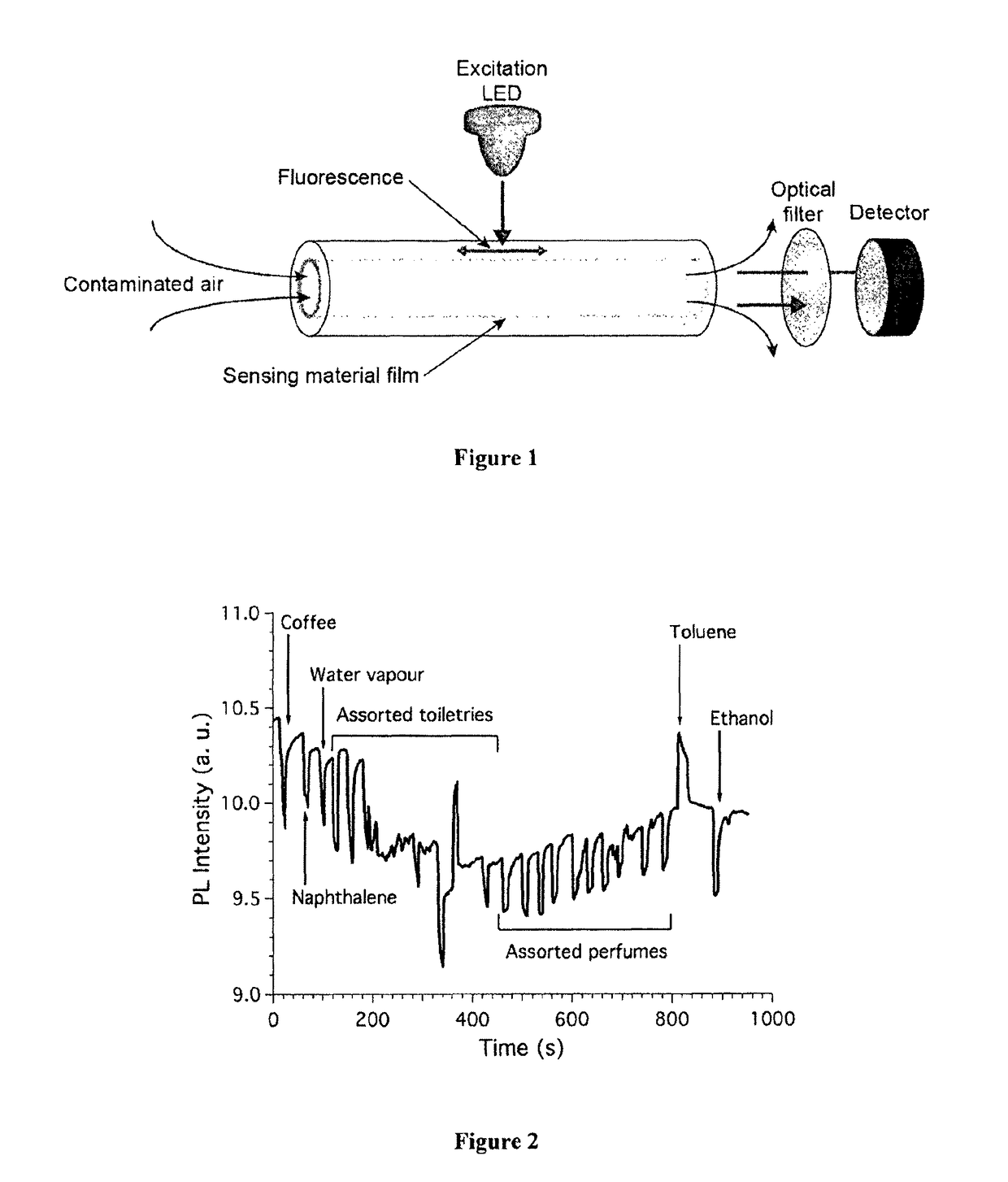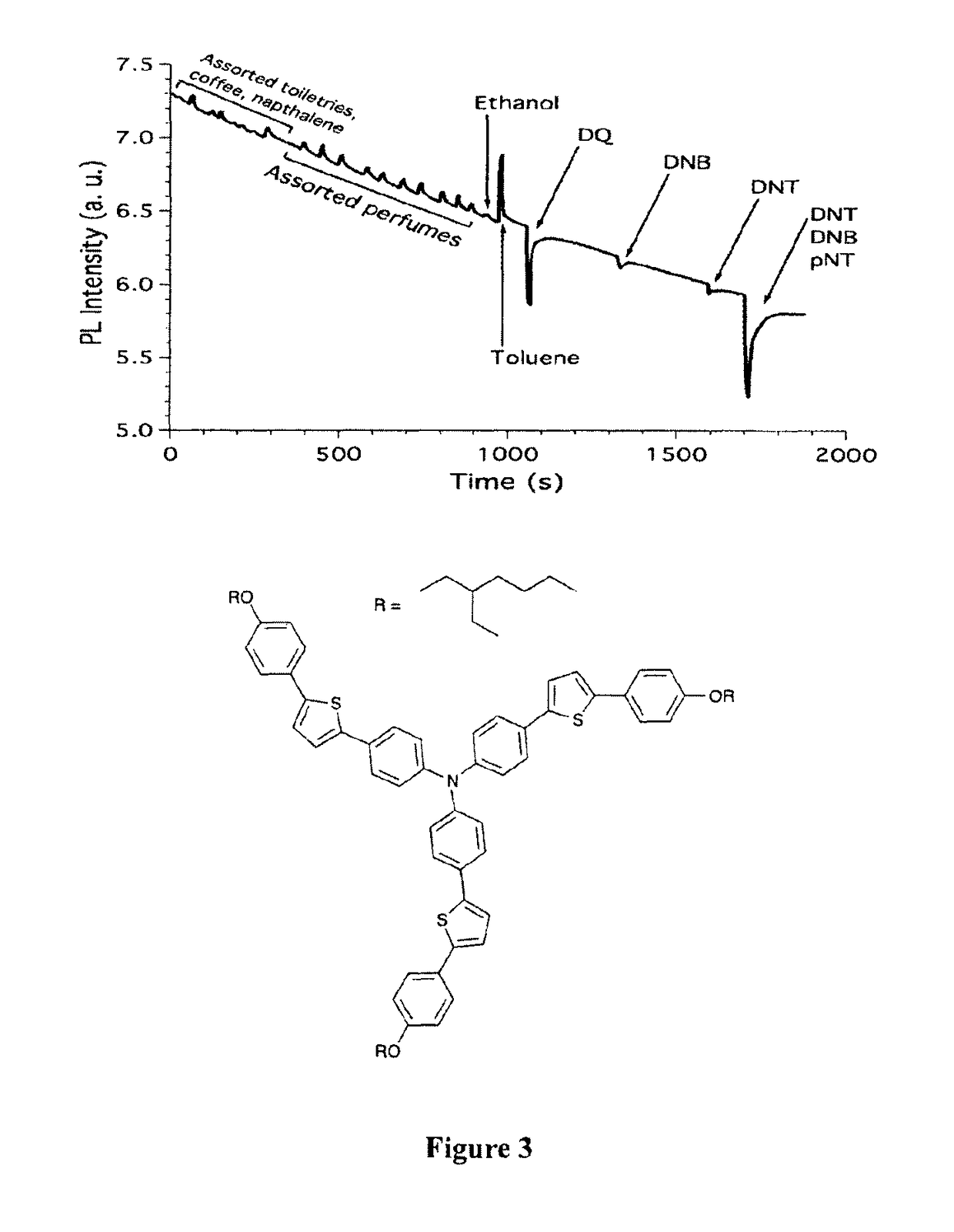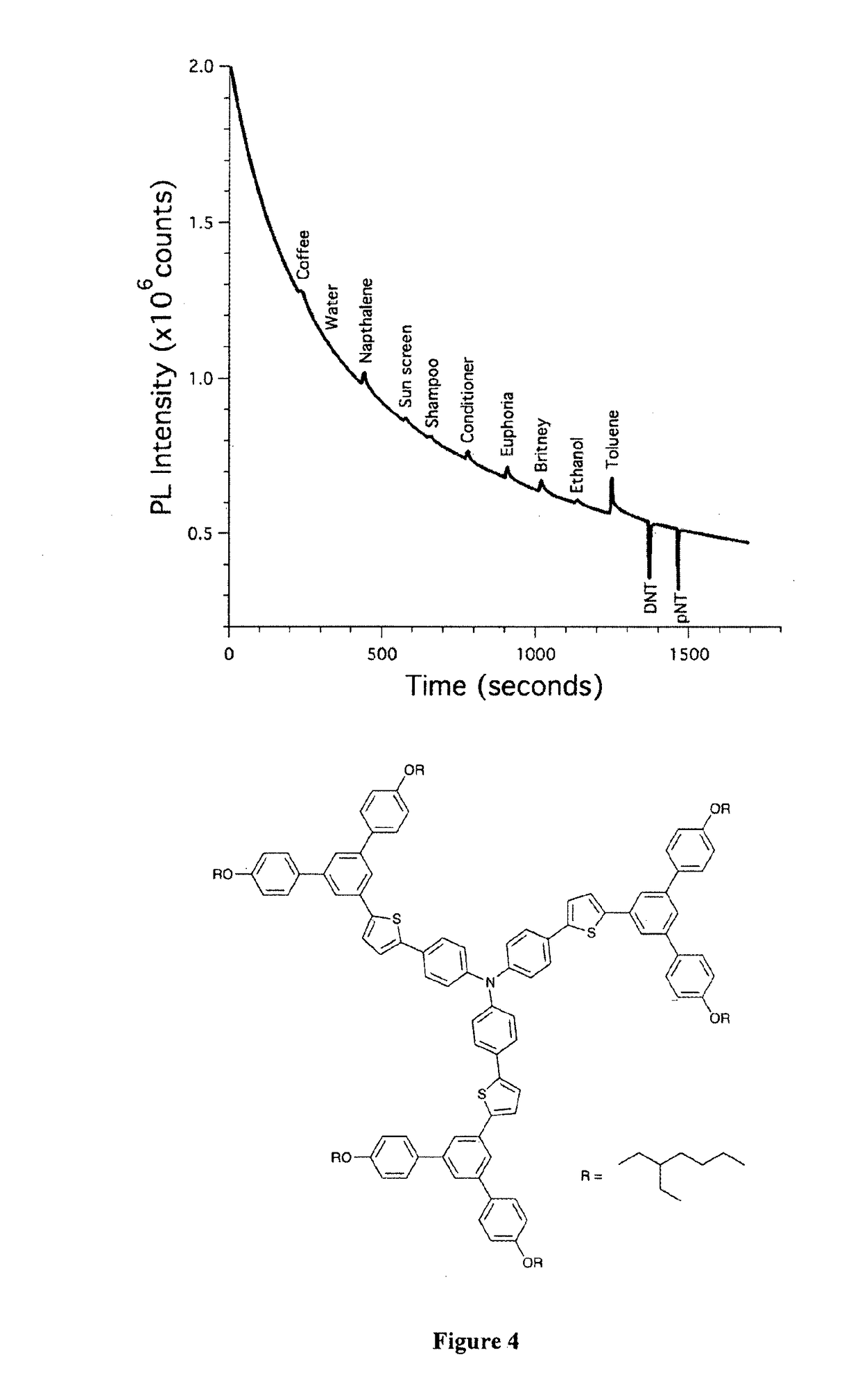Method for the detection of analytes via luminescence quenching
a luminescence quenching and analyte technology, applied in the field of analyte detection, can solve the problems of significant limitation on the usefulness of conjugated polymer sensors, and some inefficientness
- Summary
- Abstract
- Description
- Claims
- Application Information
AI Technical Summary
Benefits of technology
Problems solved by technology
Method used
Image
Examples
example 1
[0101]The channel of a glass capillary with the following dimensions: length=54 mm with the outside diameter=5 mm and internal diameter 0.5 mm, was coated with a triphenylamine centred thiophene-containing compound by blowing a solution of the material in toluene through the capillary with a flow of nitrogen gas. The coated capillary was then exposed sequentially to vapours of a range of everyday chemicals and nitroaromatic compounds (see FIG. 3). Vapour mixtures of species were not used. While exposure to nitroaromatic compounds results in a quenching of the fluorescence signal all the everyday chemicals give an increase in the fluorescence signal. In this way the sensing device shows selectivity.
[0102]In FIG. 3 the X-axis (time) denotes the time from commencement of the experiment at which the device is exposed to a particular species.
example 2
[0103]The channel of a glass capillary as above was coated with a triphenylamine centred thiophene containing dendrimer (FIG. 4) by blowing a solution of the material in toluene through the capillary with a flow of nitrogen gas. The coated capillary was then exposed sequentially to vapours of a range of everyday chemicals and nitroaromatic compounds. As with Example 1 the results show that the dendrimer exhibits an increase in fluorescence signal when exposed to the vapours from a series of everyday chemicals and quenching when it is exposed to the nitroaromatics DNT and pNT. Thus, the modification of the structure, through the addition of dendrons, has not altered the basic sensing properties.
example 3
[0105]The triphenylamine centred fluorene dendrimer shown in FIG. 6 was tested to determine whether the triphenyl amine thiophene combination was necessary for the observed selectivity. Fluorene only-based compounds, such as the one described in Example 2, do not exhibit selectivity. All tests were again performed as in Examples 1, 2, and Comparative Example 2 by coating the inside of the sensing element (glass capillary with the same dimensions as Example 1) with the sensing compound. The results show the same selectivity behaviour as observed with the other triphenylamine-based compounds: only the nitroaromatic compounds show quenching of the fluorescence with everyday chemicals resulting in an increase in the fluorescence signal. The mono-fluorene compound was also found to be more stable to photooxidation than the thiophene-containing compound.
PUM
 Login to View More
Login to View More Abstract
Description
Claims
Application Information
 Login to View More
Login to View More - R&D
- Intellectual Property
- Life Sciences
- Materials
- Tech Scout
- Unparalleled Data Quality
- Higher Quality Content
- 60% Fewer Hallucinations
Browse by: Latest US Patents, China's latest patents, Technical Efficacy Thesaurus, Application Domain, Technology Topic, Popular Technical Reports.
© 2025 PatSnap. All rights reserved.Legal|Privacy policy|Modern Slavery Act Transparency Statement|Sitemap|About US| Contact US: help@patsnap.com



